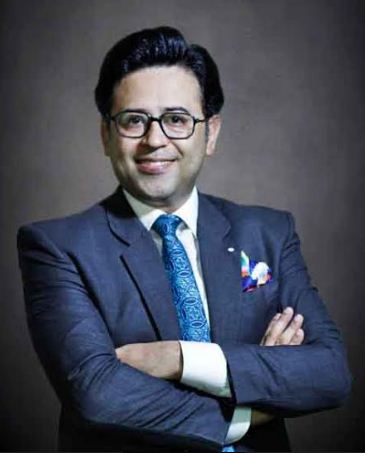Dr M Ali Hamza
Islamophobia is the fear and hatred of, or prejudice against the religion of Islam or Muslims in general. Especially when seen as a geopolitical force or the source of terrorism.Firstly groups comprise of Christain-Jewish-Hindu-Budhists and white supremacists, who propagate Islamophobia are themselves meeting non-sense extremity. But this is what they are supposed to do, and blaming them will do no good to Islam.
We have to openly admit that some Islamic factions are damaging the reputation of the entire religion i.e. ISIS and other violent Muslim groups. It is pretty obvious that these violent entities that are camouflaged in Islamic fabric have been funded with a purpose to mislead the Muslim masses and the world. Therefore besides reiterating that ‘Islam is a religion of Peace’ we need to figure out ways to rebuild the entire image of Islam. Here is a way.
Rationally speaking, religious terrorism is an outcome of religious extremism, and religious extremism is a direct product of anti-scientific mind. Let us ground this thought. A scientific mind is one that carries inductive or deductive scientific reasoning. Scientific reasoning is an ability to think about many variables or dimensions at the same time oranability to think in terms of probabilities and proportions. Such way to approach life and all its tentacles bring profundity. This consolation of scientific reasoning can never let such a person gonarrow-minded and turn into extremist or terrorist.
This rationale fits to entire history. Wherever and whenever scientific struggles are rendered, the clerics call upon such inquisitive exploration a devilish and satanic act, and instigated masses, flared them up and terror prevailed. The example of Italian scientific philosopher Giordano Bruno is undeniable fact. When Bruno shared a possibility of Sun being in the center of our solar system and earth might not be a pivotal point in the universe;by the order of church, he was burnt alive.
The people of that time were OK with the barbarianism of the church because masses were kept away from scientific reasoning. Nicolaus Copernicus avoided publishing his great work due to the pressure of non-scientific society. He formulated a ‘Heliocentric’ model of the universe that placed the Sun rather than Earth at its center. Over his death bed he raised his master piece book ‘De revolutionists’ that opened up possibilities for the birth of today’s satellite networks.
Galileo Galileiproved through his first ever long range telescope that the moon is not all that sweet. It was again a proof againstthe church, who bragged about heavenly bodies a lot. ThusGalileo was kept in house-prison and died there. Masses kept quiet: though the church was harvesting fear and hatred of, or prejudice against the Christianity but it was acceptable by the followers because they were blind folded with the prejudice against scientific reasoning.
Yes, this is reference from the dark ages in Europe.
During those dark ages in Europe, a popular region for scientificdevelopment was Arab and Persia dominated by Muslims. Those scientific developments were occurring almost in every field, from mathematics, chemistry, physics, engineering, medicine, neuroscience, to psychology, economics, sociology, geography, earth sciences, astronomy, and philosophy.
Some great minds of those times include Al-Battani who improved existing values for the length of the year and of the seasons, IbnSinawho significantly contributed to Aristotelian philosophy and medicine, Ibn Battuta;a scholarly traveler who wrote one of the most famous travel books in history‘the Rihlah’, IbnRushdwho produced a series of summaries and commentaries on most of Aristotle’s works and on Plato’s Republic, Musa Al-Khwarizmi; one who introduced Hindu-Arabic numerals and the concepts of algebra into European mathematics, Omar Khayyam; aPersian mathematician, astronomer, and poet, ThabitIbnQurra; the founder of statics, Abu Bakr Al-Razi ;one of the greatest physicians in history, Jabir IbnHaiyanknown for his highly influential works on alchemy and metallurgy, IbnIshaq Al-Kindi who stands among thefirst muslim‘peripatetic philosophers’, IbnAl-Haythem contributed to principles of optics and the use of scientific experiments, IbnZuhr is known for his immense work onTherapeutics and Diet,IbnKhuldunwho developed one of the earliest nonreligious philosophies of history and the list goes on and on.Those all wonderful people are considered as one of the forerunners of modern way of thinking in science and technology.
Those were Muslims belonged to the same religion Islam, but were respected and honored due to their diligence of wisdom. Todays’ Islam is distorted by anti-scientific minds, and we have to admit that we are in dark ages. Our global impression is no more spelled out by our scientific work rather something else.
The above premises builds up the need to connect Muslim societies with science, and that is what science communication does. Science communication must be on the top agenda for rebuilding image of Islam. We have to invest our resources; will, energies, finances, to encourage our masses toward scientific reasoning. Only uttering out words won’t make a difference.
Therefore Besides relying on developing alliances with Christians, Buddhists, atheists, Hindus, Jews and others who believe in the sanctity of life and who are willing to confront their owns to seek dignity for every human being. There is another way and that is of Science Communication.
The writer is a columnist and broadcast journalist. He can be reached at [email protected]











